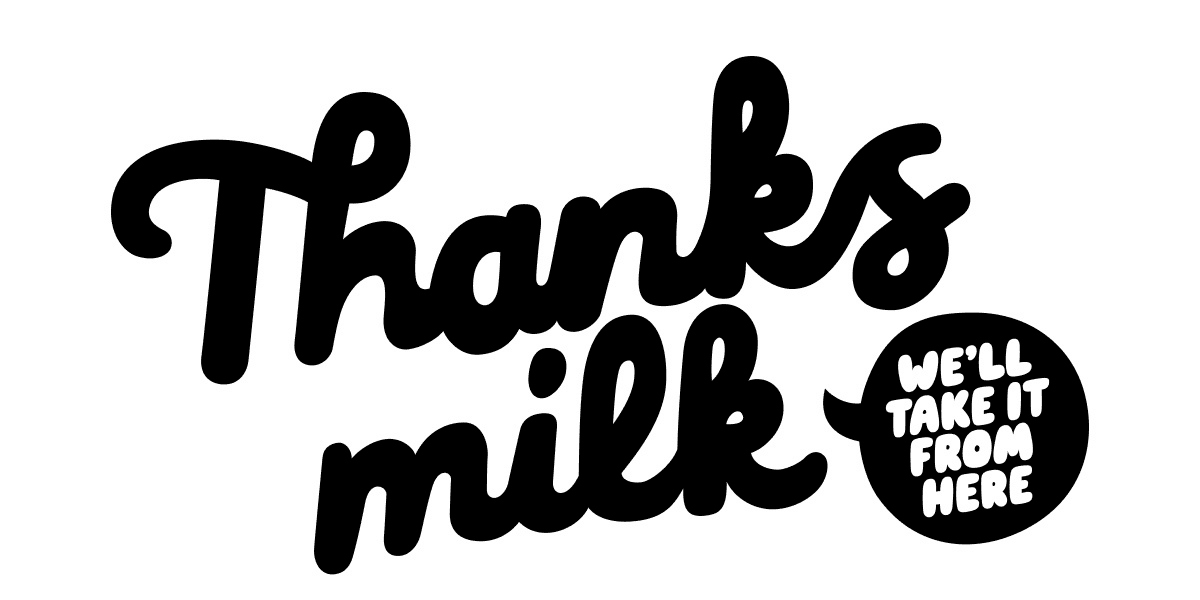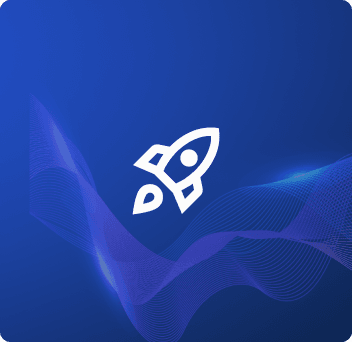Updated: November 15, 2024- 22 min read
Behind every successful product lies not only a great product but a marketing strategy that’s been carefully crafted, tested, and fine-tuned. It’s about telling its story in a way that resonates with a handpicked audience.
The great product teams understand the principles of product marketing strategy. They know how to take an idea and turn it into a product-market fit. They also know how to make a product launch plan and nudge the rest of product development to make the product indispensable.
In this article, we’re diving into 17 real-world product marketing examples to inspire your team.
These aren’t just big-name stories—they’re creative, thoughtful strategies that product marketers like you can apply. Whether you're in SaaS, IT, or other niches, these examples will give you the spark you need to supercharge your own campaigns.
Product Launch Checklist
Launch is a critical time that can make the difference between product success and failure. Use this checklist to make sure nothing falls through the cracks.
DOWNLOAD CHECKLIST
17 Product Marketing Strategy Examples to Explore
Here are 17 standout product marketing examples that show just how creative and impactful marketing can be when it's done right.
From no-code platforms to viral campaigns, each company on this list has mastered a unique approach to driving user engagement and growth. These examples are packed with insights that can inspire your own product marketing strategies.
1. Gainsight: Mastering Product-Led Growth with Seamless Customer Success
🏆 Proddy Award Winner
Gainsight is a SaaS platform focused on customer success and product experience. It operates in the digital adoption and customer retention niche. It helps companies improve user engagement with tools for real-time analytics, in-app guidance, and customer feedback management.
Gainsight stands out because it has mastered Product-led Growth (PLG), making the product central to driving conversions and revenue. The platform isn’t just about selling software—it’s about showing how their product can enhance customer lifetime value and retention for other SaaS companies.
By emphasizing product adoption as a critical driver of business success, Gainsight has positioned itself as a leader in the industry.
Gainsight's approach found in their report is unique because it blends customer success with data-driven insights. It focuses on customer retention and real-time engagement. Gainsight’s product marketing strategy heavily relies on personalized, in-app experiences, guiding users at every step and ensuring a seamless user journey. Their partnership with brands like Adobe and SAP is a testament to this strategy's effectiveness.
What Gainsight is great at:
Data-driven insights for product adoption and engagement.
Seamless integration of customer success and product analytics.
Personalized user experiences that lead to better retention and upselling.
Their product marketing success is further highlighted by McKinsey, which has recognized Gainsight’s leadership in net revenue retention for SaaS companies. Their CEO frequently discusses how their product-led growth marketing model has transformed SaaS businesses.
2. Chameleon: Driving User Adoption Through Real-Time In-App Guidance

Chameleon is a user onboarding and product adoption platform designed to help SaaS companies improve their user experience. It operates in the product adoption and customer success niche. It offers features such as in-app product tours, tooltips, and feedback widgets to guide users throughout their journey with the product.
Chameleon is one the best product marketing examples because of how it focuses on enhancing user engagement right from the onboarding phase. By offering personalized and interactive product tours, Chameleon allows companies to educate users in-app. This strategy has led to higher user adoption rates and improved product retention for its clients.
What makes Chameleon’s approach to product marketing unique is its focus on in-app, real-time guidance. Instead of relying solely on external communication like emails, Chameleon embeds the product education directly into the user interface. It helps reduce friction and users are able to achieve their "Aha!" moments faster.
What Chameleon is great at:
Personalized in-app product tours to drive user adoption.
Real-time feedback and behavioral analytics to enhance user engagement.
Customizable onboarding flows that adapt to different user personas.
Additional proof of Chameleon's success is found in its ability to cater to companies of all sizes, using real-time data to refine user flows and improve feature discovery.
3. Appcues: No-Code Onboarding That Puts Power in Non-Tech
🏆 Proddy Award Winner
Appcues is a no-code platform designed to improve user onboarding, adoption, and engagement for web and mobile apps. It operates in the product adoption and product experience niche, enabling product and marketing teams to create personalized onboarding flows, in-app messaging, and user feedback collection without needing developer support.
Appcues is a fantastic product marketing example because of its focus on reducing the technical barriers for product teams to implement personalized user experiences. By offering a no-code solution, Appcues empowers teams to quickly iterate and improve the user journey. This approach has helped many SaaS companies streamline their onboarding and increase user satisfaction.
What makes Appcues' approach to product marketing truly stand out, as highlighted in their success stories, is its ability to empower non-technical teams with a no-code platform. They allow teams to launch product tours, tooltips, and user surveys directly within the app. This empowers non-technical teams, which there’s a lot of, to own the user experience and continuously refine it without waiting on developers.
What Appcues is great at:
A no-code platform that allows non-technical teams to implement onboarding flows.
Behavior-driven customization of in-app messaging for targeted user engagement.
Rapid deployment of onboarding experiences, allowing teams to act quickly on user feedback.
4. Dropbox: Referral Marketing at Its Finest
Dropbox is a file-sharing and storage service that we all know. It allows users to store, share, and access files from any device, aside from the plethora of other product-supporting features. The tool is popular for both individuals and teams that need secure, cloud-based solutions.
Dropbox is one of the best product marketing campaigns example because of its innovative referral program.
Their widely known campaign offered users extra storage space for each friend they referred. Whoever got their friend in would also receive free storage. This created a viral loop where users were incentivized to share the product. Back when no company played with such approach, they ended up having exponential growth — at one point, referrals drove 60% of Dropbox's signups as reported by Viral Loops.
It’s a prime example of how a well-executed referral campaign can fuel organic growth.
What makes Dropbox's approach to product marketing unique is its focus on user-driven promotion. By incentivizing existing users to refer others, Dropbox transformed its customer base into a powerful marketing force.
What Dropbox is great at:
Referral-based growth that incentivizes user advocacy.
A seamless user experience that encourages sharing and engagement.
Cost-effective customer acquisition through organic referrals.
Dropbox’s success story is a staple in discussions about growth hacking and referral marketing. Their ability to rapidly scale through word-of-mouth is a textbook example of how a creative, well-executed product marketing campaign can become a cornerstone of a company’s growth strategy.
5. Whatfix: Scaling Globally with Personalized In-App Guidance & AI
🏆 Proddy Award Winner
Whatfix is a digital adoption platform (DAP) that enhances user engagement by providing real-time in-app guidance, personalized onboarding, and interactive tutorials. It operates in the SaaS and enterprise software niche, helping businesses increase user adoption and productivity by simplifying complex software interactions for users.
Whatfix is one of those products with good marketing because it focuses on personalized, data-driven engagement to ensure users quickly understand the value at hand.
This approach accelerates onboarding, reduces support costs, and improves software adoption rates across enterprise applications. The company's ability to target international markets effectively — scaling across North America and Europe — has been a key driver of its success.
What makes Whatfix’s product marketing strategy unique is its targeted, region-specific product marketing campaigns.
By leveraging LinkedIn’s marketing solutions, Whatfix expanded its brand visibility across new international markets. They used a mix of paid and organic content to increase brand awareness while focusing on engagement from high-quality leads. This blend of strategy and platform choice has helped Whatfix achieve remarkable growth globally.
What Whatfix is great at:
AI-driven, in-app guidance that offers personalized user support.
Scalable, global marketing strategies that target key regions like North America and Europe.
Data-driven insights that help optimize product usage and adoption.
6. Apple: "Shot on iPhone" Campaign

Apple is a tech giant known for its innovative products like the iPhone, iPad, and Mac. Instead of diving into their strategy in general, let’s get a look from a close-up.
The "Shot on iPhone" campaign, launched in 2015, was a user-generated content (UGC) marketing campaign. It showcased the capabilities of the iPhone camera through photos and videos captured by everyday users. Operating in the highly competitive smartphone market, Apple used this campaign to emphasize its camera quality without traditional specs-heavy advertising.
Their campaign is a brilliant product marketing campaign example because it leverages UGC to create authentic brand engagement. By encouraging users to submit their own iPhone photos, Apple turned its customers into ambassadors. This not only promoted the iPhone’s camera capabilities but also created a strong sense of community.
The campaign has evolved over time, with new iterations for various iPhone models and special editions like the Shot on iPhone Challenge.
What makes Apple’s approach unique is the focus on authenticity and creativity. Instead of heavily relying on traditional advertising, Apple allowed its users to be the storytellers. The campaign spanned billboards, print ads, social media, and even video projects featuring these photos.
The simplicity of showcasing stunning photos taken by “you and us” made the iPhone camera synonymous with professional-quality photography.
What Apple is great at:
User-generated content that engages and empowers users to promote the product.
Minimalistic advertising that focuses on the product’s core strengths, such as the camera.
Global community-building by encouraging participation from users across multiple countries.
The "Shot on iPhone" campaign not only led to record iPhone sales but also won numerous awards, including a Cannes Lions Grand Prix as per Forbes. Apple’s ability to connect with its audience through UGC while showcasing the power of its camera has made this campaign one of the most iconic and effective examples of product marketing.
7. Amplitude: Data-driven Insights That Transform Product Decisions
🏆 Proddy Award Winner
Amplitude is a digital analytics platform that helps businesses understand user behavior and make data-driven product decisions. It operates in the product analytics and SaaS niche. It’s focus is providing features that allow companies to track, analyze, and optimize customer interactions with their digital products.
Amplitude is a standout product marketing strategy example because it focuses on educating customers through real-world data insights. By positioning itself as an enabler of Product-led Growth, Amplitude emphasizes how companies can use data to improve their product decisions and increase customer retention.
What makes Amplitude’s marketing unique is its focus on content leadership.
Through in-depth case studies, reports, and real-time product data, Amplitude helps its users make sense of complex user behavior. Additionally, their free plan for startups allows small companies to start with their product, eventually growing into paying customers as their needs scale.
What Amplitude is great at:
Product-led growth: Empowering companies to drive decisions based on user behavior data.
Content-driven marketing: Providing educational content to teach businesses how to leverage data.
Startup-friendly pricing: Offering free access for startups, allowing them to grow into paying customers.
Amplitude’s product marketing success is further proven by its global customer base. Their client base includes companies like Ford and Shopify, which use Amplitude’s platform to inform critical product decisions and drive revenue.
8. Airbnb: Turning Hosts and Guests into Brand Ambassadors

Airbnb revolutionized the hospitality industry by offering a platform where people could rent out their homes to travelers. That’s a first, bold marketing move right there.
But what truly sets their product marketing strategy apart is their ability to make users the heart of their brand, especially with their iconic "Belong Anywhere" campaign. This user-generated content (UGC) approach gave real stories from hosts and guests on a global stage, shifting Airbnb from just booking rooms to building communities.
Their marketing isn’t about promoting vacation rentals; it’s about promoting belonging.
Airbnb tapped into the emotional connection people have with traveling, using authentic experiences to showcase how anyone, anywhere, can find a place where they feel at home. By leaning into UGC, Airbnb elevated the voice of their users, who became the true ambassadors of their platform.
What Airbnb is great at:
Authenticity through UGC, allows real customers to tell the story.
Emotional branding focuses on connection and belonging.
Community-building, where users are not just clients, but part of a shared experience.
9. Mixpanel: Account-Based Marketing Meets Freemium
🏆 Proddy Award Winner
Mixpanel is a leading product analytics tool that empowers companies to understand and improve how their users engage with digital products. Operating primarily in the SaaS space, Mixpanel is designed to help teams analyze user behavior. The tool helps to enable data-driven decisions to enhance product experience and customer satisfaction.
What makes Mixpanel stand out as a product marketing example is its transition to a freemium model and how it integrated account-based marketing (ABM) strategies.
When Mixpanel shifted to a freemium offering, they needed to engage both startups and enterprise customers alike. They offer what customers today say is ‘fairly generous freemium’.
By using ABM, they personalized their ad campaigns and retargeted users who had signed up but hadn’t fully engaged with the product. As per Rollwork, this approach resulted in a significant 200% increase in signups and a 98% boost in lifetime value from paid channels.
What Mixpanel is great at:
Crafting personalized, account-based marketing campaigns.
Efficiently retargeting high-value accounts to drive conversions.
Using a predictive LTV model to focus sales and marketing efforts on accounts with the highest potential.
10. Slack: Virality and Product-Led Growth
https://drive.google.com/file/d/16jH4ruNC_eTbRBB3iSTctsf8idp4PJUn/view?usp=sharing
Slack stands out as an exceptional product marketing example for several reasons. One is their focus on product-led growth and user onboarding. Second is a highly intuitive interface and third is the freemium model to captivate users at scale.
This model enabled teams to experience Slack's core features for free. That’s why today everyone sort of knows about the tool or has used it extensively. A nice portion of their audience eventually upgrades to premium plans for enhanced features like increased storage and advanced administrative tools.
What makes Slack’s approach unique is its emphasis on virality and network effects. Users invite others into their workspace, which inherently grows Slack's user base.
Their marketing strategy also includes a ‘bottom-up approach’, where Slack targeted individual team managers rather than CIOs or upper management. Imagine how this makes product adoption easier. As these teams experienced the tool's benefits, Slack naturally expanded within organizations, promoting viral growth.
Additionally, Slack focuses on ‘Product-Qualified Leads (PQLs)’, identifying users who have sent a certain number of messages or integrated apps as key conversion points from free to paid plans. This approach driven by product metrics ensures Slack prioritizes users with high engagement and product needs.
Key things that Slack excels at:
The freemium model encourages wide adoption without requiring a credit card for the free plan.
Seamless onboarding that allows users to immediately understand and see the value of the product.
Viral loops are built into the platform, encouraging users to invite others to join.
11. Patagonia: Building Brand Loyalty Through Authenticity and Sustainability
Patagonia is an exemplary product marketing case. It cherishes a unique blend of sustainability and product quality.
Operating in the outdoor apparel niche, Patagonia champions eco-consciousness with long-lasting gear and environmental advocacy. A standout moment in their product marketing was the “Don’t Buy This Jacket” product advertising campaign. They encouraged customers to buy less and think twice before making purchases. As opposed to most of their industry competitors, they promoted repairing and reusing gear.
This bold approach resonated with their environmentally conscious audience. It strongly positioned Patagonia as a brand committed to sustainability, not just profit. Their efforts included launching the Worn Wear program — it allowed customers to repair or trade in old Patagonia products for credits toward new ones.
This, essentially customer-centric strategy, didn’t just build brand loyalty; it also drove growth. Despite ‘urging customers to buy less’, Patagonia’s revenue grew by 30% in the year following the campaign, as per Investopedia.
What makes Patagonia’s marketing unique is its focus on authenticity and activism. The company doesn’t just market sustainability—it’s ingrained in every aspect of the business. From donating to environmental causes to using recycled and fair-trade materials, Patagonia consistently backs its message with action.
Key things Patagonia excels at:
Purpose-driven marketing: A clear focus on sustainability that resonates with eco-conscious consumers.
Promoting longevity: Encourages customers to repair rather than replace products.
Authenticity: Aligns marketing with real environmental action, building deep trust with consumers.
12. Oatly: Challenging the Dairy Industry with Bold, Controversial Campaigns

Oatly is another unique example of product promotion, known for its quirky, bold approach to marketing.
Operating in the plant-based beverage niche, Oatly champions sustainability and transparency. A noteworthy moment in their marketing was their “It’s like milk, but made for humans” campaign. They playfully mocked traditional dairy while promoting oat milk as a healthier, more sustainable alternative.
This bold marketing message resonated with eco-conscious consumers. The view of the company was further strengthened by their controversial Super Bowl ad featuring their CEO singing in a field — an ad that turned heads and created buzz despite its simplicity.
What sets Oatly apart is how they use controversy to fuel engagement. Their legal battles with the dairy industry over the slogan even worked to their advantage, with Oatly using the lawsuit’s full text in their communications — yes, ultimately to their advantage.
Oatly’s ‘grassroots approach’ also helped its rise to popularity. Early partnerships with coffee shops, where baristas introduced consumers to oat milk, allowed Oatly to build credibility. This ultimately led to partnerships with global chains like Starbucks.
Key things Oatly excels at:
Bold, controversial messaging that challenges the status quo and stands out.
Sustainability focus that resonates with climate-conscious consumers.
Humor and transparency make the brand relatable and engaging.
Oatly’s success story shows how thinking outside the box and leaning into controversy can build brand awareness and loyalty.
13. Notion: Community-Driven Growth with User-Created Templates and Tools
Notion operates in the collaborative workspace niche. They help individuals and teams organize work, share knowledge, and manage projects. It also one of the tools featured in our comprehensive list of AI business tools.
What sets Notion apart is its community-led approach. From its early days, Notion leveraged a strong, organic user community that contributed templates, tutorials, and ideas. Essentially, users made and marketed the product themselves. This created a loyal fan base, and the product’s virality expanded through user-generated content and word-of-mouth.
Notion’s product strategy is uniquely centered on empowering its users.
For example, the company launched the Notion Ambassador program. This is where users could host events, create templates, and educate others. A decentralized approach allowed Notion to scale globally without the need for heavy paid advertising.
One of Notion's signature moves has been building a template gallery filled with user-created templates for everything from personal planning to corporate workflows. This helped break down the product’s learning curve and encouraged faster adoption.
Notion also expanded its reach by forming strategic integrations with tools like Jira and Slack. This synergistic use allowed users to streamline workflows across their existing platforms.
Key things Notion excels at:
Community-led growth: Encouraging users to create, promote, and educate others about the product.
Template-driven adoption: Using a curated gallery to help users get started quickly.
Integrations: Seamlessly connecting with popular tools like Slack and Jira.
14. Figma: Collaborative Design with Real-Time Cloud-Based Features
🏆 Proddy Award Winner
Figma is a powerful web-based collaborative design platform, primarily catering to designers, developers, and product teams. It competes directly with well-established players like Adobe and manages to stand out.
What makes Figma exceptional is its focus on real-time collaboration. It easy for distributed teams to work together seamlessly using Figma.
The tool is free to use with core features available to anyone, which helped it build a loyal user base early on. This model, combined with powerful collaboration, drove product adoption during a time when the design industry was hungry for more intuitive, cloud-based solutions. Unlike traditional design tools that required heavy software, Figma made designing as simple as opening a browser.
What makes Figma's approach to product marketing unique is how it harnesses its community to drive growth. By integrating user-generated content, such as templates and design kits, Figma created a shared economy of design resources. This not only drove user engagement but also built Figma’s SEO strategy, allowing it to rank highly for design-related queries.
A key success story includes their community-led events and outreach, like Config, their annual design conference, and Friends of Figma, which engages design communities globally. These initiatives fostered a strong connection between the product and its users, creating organic brand advocacy and long-term loyalty.
Key things Figma excels at:
The freemium model that attracts new users by providing extensive features for free.
Community-driven growth through user-generated content, design events, and collaborative workspaces.
Real-time collaboration that allows teams to co-design efficiently, fostering viral growth.
15. Maze: Automating User Research to Keep Product Development Agile
Maze is a user research platform built to streamline the process of gathering user insights at the speed of product development. Operating in the UX and product development niche, Maze enables teams, product designers, and researchers to make data-driven decisions quickly through a combination of user research, prototype studies, and continuous feedback collection.
The platform is used by over 60,000 teams globally, including top-tier companies like Klarna and Braze.
Maze stands out as an excellent example of product marketing because of its ability to make user research accessible to non-experts. They turned traditionally complicated research tasks into an intuitive and automated experience.
This seamless accessibility has allowed them to cater not only to research-heavy teams but also to product designers and UX teams who need quick insights. Their marketing strategy is unique because they focus heavily on democratizing research across teams. This lowers the barrier to entry for companies at all levels of research maturity(
Key things Maze excels at:
Automated insights: Turn research data into actionable reports quickly, with AI-driven analysis.
User-friendly onboarding: Simplifies research for teams of all expertise levels.
Wide-ranging integration: From recruitment to reporting, Maze handles the full research workflow with ease.
16. IKEA: Democratic Design and Sustainable Solutions for Every Home
https://drive.google.com/file/d/1k9LKLTqI2fk8-YiaKcrXn-IqtBmSO6UM/view?usp=sharing
What makes IKEA's product marketing strategy so unique is its balance between innovation and practicality, recently combined with a strong focus on sustainability. They have perfected their customer experience, both in-store and online. Their practices sort of became a model of retail excellence.
They got attention with their "Democratic Design" philosophy — it emphasizes making sustainable, aesthetically pleasing, and functional furniture accessible to everyone.
This strategy allows customers to assemble products at home. How about that for a sense of accomplishment and personalization to the product experience as well as less overhead operational costs? IKEA’s memorable marketing moments include its iconic catalogs and engaging in-store layouts, both designed to help customers visualize how IKEA products will look in their own homes.
IKEA’s marketing also excels in localization — they adapt their efforts to suit local tastes, preferences and humor. This ability to tailor their message has helped IKEA flourish across different regions globally, while still maintaining their core values of affordability and sustainability.
Key things IKEA excels at:
Customer-centric in-store experiences that keep shoppers engaged.
Sustainability initiatives that resonate with eco-conscious consumers.
Localized marketing strategies that cater to specific regional preferences while maintaining global consistency.
17. Airtable: No-Code Flexibility for Every Workflow
Airtable is a powerful no-code platform designed to help teams across industries organize, track, and manage their workflows. Operating in the project management and database niche, Airtable stands out for its ease of use and flexibility. The tool is equally accessible to both technical and non-technical users.
What makes Airtable a great product marketing strategy example is its ability to position itself as a horizontal product with endless use cases.
Their marketing strategy focuses on the versatility of the tool. It provides various templates for different industries — from event planning to UX research — while leveraging search intent to compete in organic search results. Airtable’s template landing pages attract significant traffic and are key to driving adoption. This makes it a valuable resource for businesses looking for ready-made solutions.
One unique approach is their This Is How campaign, which showcases short video ads that illustrate how Airtable fits seamlessly into a wide range of business environments. This campaign effectively highlights Airtable's flexibility and user-friendly nature.
Key things Airtable excels at:
Offering a wide array of templates to cater to various business needs.
SEO-driven marketing strategies that boost search engine rankings.
Strong community engagement through user-generated content and an active community forum.
Leverage Product Marketing Campaign Examples for Real Results
These 17 examples show how creative, data-driven, and user-centric strategies can elevate a brand. But the key takeaway isn’t just to admire these stories — it’s to follow in their footsteps.
The success of these companies stems from their ability to adapt, experiment, and continuously refine their approach. Now, it's your turn.
Start applying these tactics to your own marketing efforts, whether it’s leveraging user-generated content, optimizing onboarding, or focusing on product-led growth. Remember, the best strategy is the one you’re constantly improving—so get started, test, and see what drives your product to the top.
Go-to-Market Certification
Create a winning GTM plan. Craft standout positioning, design messaging that sells, analyze markets, and drive post-launch momentum, all while leveraging the latest AI-first strategies.
Enroll now
Updated: November 15, 2024





